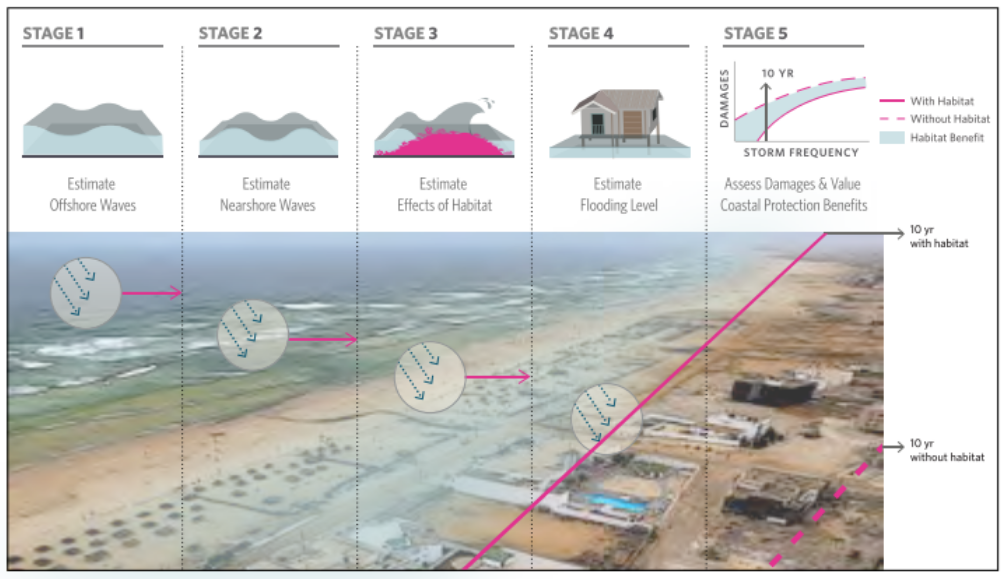Teams Like This
Coastal development and climate change are increasing the risks to millions of people from storm surges, sea-level rise and other natural hazards. Coastal habitats like mangroves, coral reefs, and salt marshes can reduce those risks and protect lives and property in a more cost-effective way, providing benefits for coastal species as well as the human communities that rely on them.
OUR APPROACH: This team explored and synthesized information on how healthy coastal habitats can help protect coastal communities and livelihoods from the impacts of extreme storm events, such as hurricanes.

The team synthesized information on natural habitats and organized it in a publicly available, free database. This collection includes 67 examples of natural coastal defenses around the globe, demonstrating that coastal habitats can and do provide considerable protection to coastal communities. The ultimate goal of this database is to provide lessons and guidance for the effective management and use of habitats for coastal defense.
Damage Prevented during Hurricane Sandy
Together with leaders in the insurance and risk management industries, such as Lloyd’s of London, Risk Management Solutions, and Guy Carpenter and Company, the team put a dollar value on the risk reduction provided by coastal wetlands. They discovered that coastal wetlands prevented more than $625 million in property damages along the Northeast coast during Hurricane Sandy and reduced property damages by 10% on average. By highlighting the direct and quantifiable benefits wetlands can provide, the team helped companies and communities understand how they can conserve, restore, and benefit from natural defenses.

“This work shows the unlikely yet powerful benefits of collaboration between insurers, engineers, and conservationists in identifying solutions to reduce risks to people, property, and nature.”
– Mike Beck, Project co-leader
A post on The Nature Conservancy’s blog, Cool Green Science, highlighting the results created by this multidisciplinary team.
This database contains cost-benefit information about the implementation of different coastal defense solutions and their effectiveness in reducing waves to protect coastlines.
This project brief outlines a framework for a guidance document to help developing nations incorporate natural coastal defenses into their wealth accounts.
In this PLoS ONE article, the team describes how data-poor mapping of ecosystems services may impact the equity of mangrove management for particular services across the urban-rural divide in developing countries.
University of California, Santa Cruz
Pollination Group
University of California, Santa Cruz
Deltares
Wildlife Conservation Society
United Nations University
Senior Economist (World Bank) and Environment for Development Initiative
Environmental Hydraulics Institute IH Cantabria
Mercy Corps
University of California, Davis
Talanoa Consulting Fiji
East Carolina University